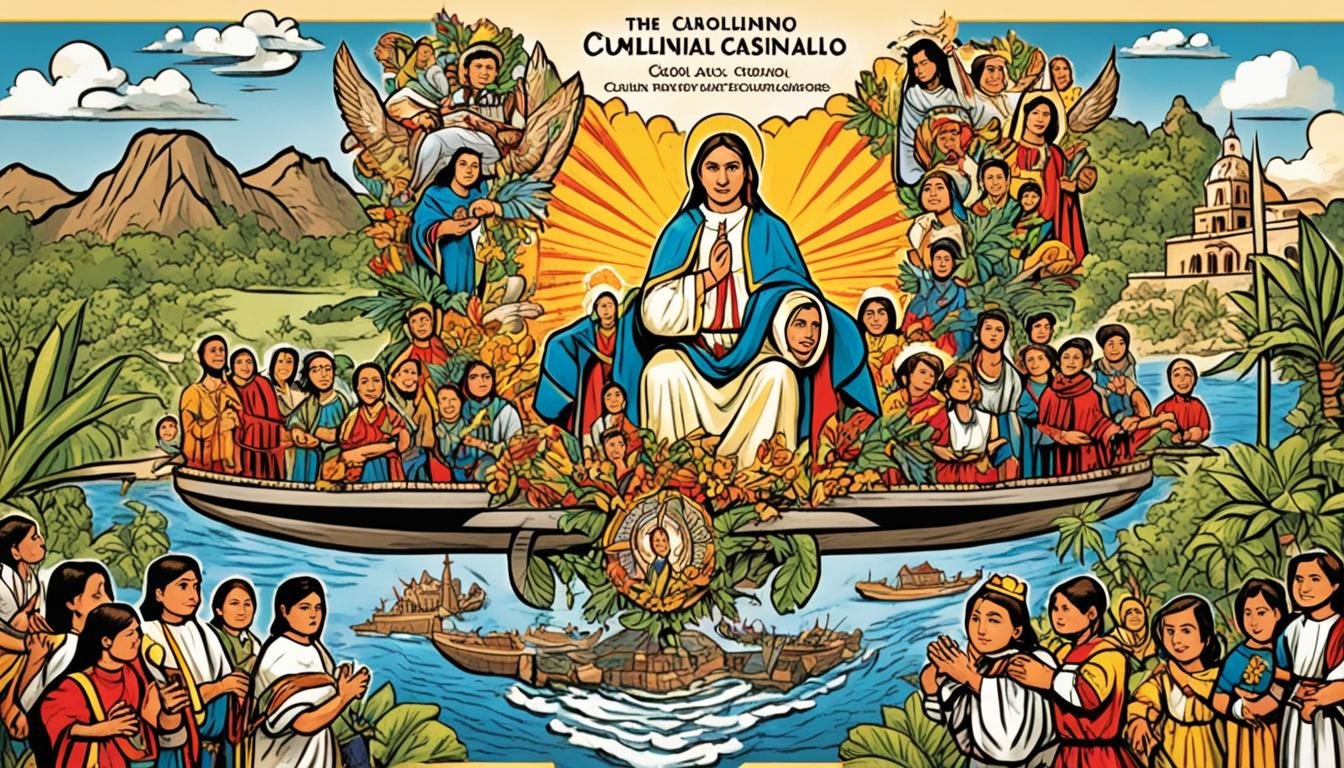About 90% of the Philippines’ 104 million people were Christian in 2000, notes the CIA World Factbook. Most of these were Catholic. This shows how deeply Christianity has influenced the country. The Philippines’ religious story includes native beliefs mixing with those of Spanish colonialists and the Christian faith. This mix formed a rich culture where various beliefs meet.
In Southeast Asia, the Philippines stands out with its Christian majority. Before Spanish missionaries came in the 16th century, Islam arrived through trade by the 14th century. In 1521, the Portuguese’s Ferdinand Magellan introduced Catholicism, celebrating the first mass on Limasawa Island.
By April 14, 1521, the King and Queen of Cebu and many others had become Catholic. In just 25 years, half of the population had followed suit. This quick adoption of the new faith was helped by books written in Tagalog. This story captures the intense early Christianization of the Philippines.
Key Takeaways
- The Philippines has a rich religious history, with a majority Christian population and a history of indigenous beliefs and the influence of the Spanish Inquisition.
- Islam was introduced in the Philippines in the late 14th century through trade, while Catholicism arrived with the voyages of Ferdinand Magellan in the 16th century.
- The first recorded conversion in the Philippines took place on Cebu in 1521, and within 25 years, about half of the population had converted to Christianity.
- The rapid conversion was aided by the publication of catechism books in Filipino languages.
- The religious landscape of the Philippines reflects the interplay of indigenous beliefs, the arrival of Christianity, and the impact of the Spanish Inquisition.
Indigenous Beliefs in Pre-Colonial Philippines
Before outsiders came, the Philippines held deep beliefs and traditions. These were tied to animism. It means they thought the world was full of spirits. People believed they needed to worship nature to honor these spirits.
Animism and Nature Worship
In old times, Filipinos worshipped special deities. For example, they revered Bathala, the chief deity in Tagalog culture. They also respected spirits of dead family members. This was called ancestor veneration.
People who knew magic, chants, and prayers were highly revered. These included shamans and priestesses. They did more than spiritual work. They also healed the sick, helped deliver babies, and kept the tribe’s stories.
Deities and Ancestor Veneration
In the Visayan areas, belief was in a mix of shamanism and spiritualism. They believed in things like witchcraft and creatures such as aswang. These beliefs mixed with later Christian and Islamic ones in the Philippines.
Role of Shamans and Priestesses
Individuals who practiced spiritualism were vital community members. They were known as babaylan and mananambal. They weren’t just spiritual leaders. They were also healers, taught babies to be born, and kept hold of tribal history.
After the outsiders left, their roles combined into what we now call albularyo. This person mixes traditional and new ways of healing.
Arrival of Christianity
Christianity came to the Philippines in 1521 when Ferdinand Magellan arrived. He and his crew met the locals on Homonhon Island, who helped them. Then, on Easter Sunday of that year, they held the first Catholic mass in the Philippines at Limasawa Island.
Ferdinand Magellan’s Voyage
In 1521, Ferdinand Magellan started a journey. His trip was the first to bring Christianity to the Philippines, earlier called St. Lazarus’ Islands. This name came from Spanish explorer Ruy López de Villalobos.
First Catholic Mass in the Philippines
The first Catholic mass in the Philippines was held on Easter Sunday, in March 1521. It happened at Limasawa Island by Magellan’s missionaries.
Rapid Conversion to Christianity
King and Queen of Cebu and their people were the first to accept Catholicism on April 14, 1521. By 25 years later, 250,000 Filipinos had become Christians. This was helped by making books about religion in the local languages.
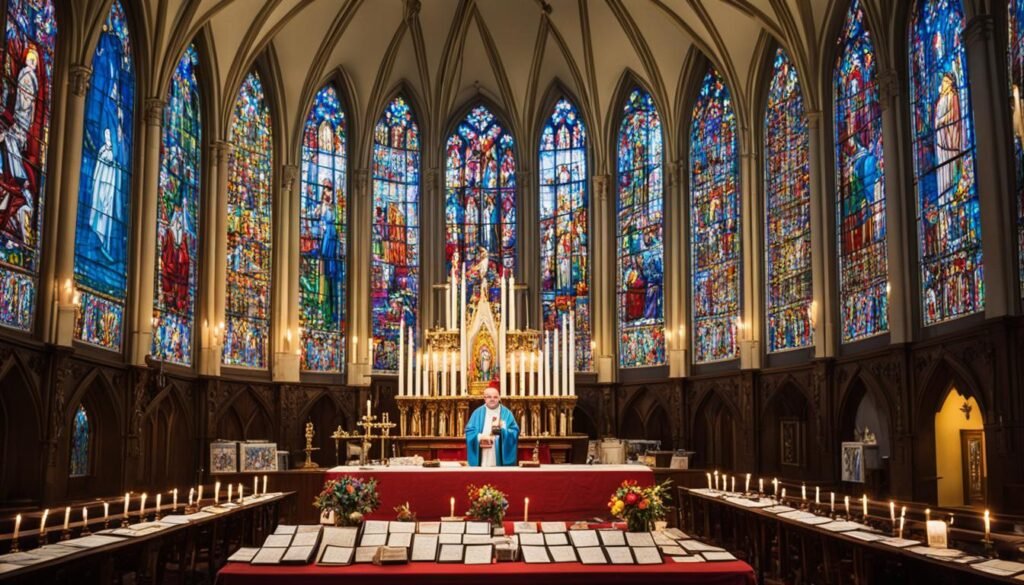
The Spanish Inquisition in the Philippines
It’s clear that a Philippine Inquisition existed. It was tied to the Mexican Inquisition, itself a division of the Spanish Inquisition. Just like Mexico’s Inquisition, the Philippine one grew in stages: first, a monastic or friar inquisition, then an episcopal phase, and finally, a tribunal style.
José Toribio Medina, the only scholar to study the Philippine Inquisition deeply, didn’t find proof of a monastic phase. He believed the Philippines only went through episcopal and tribunal inquisitions.
| Stage | Details |
|---|---|
| Monastic or Friar Inquisition | The Philippine Inquisition went through this stage, similar to the evolution of the inquisition in Spanish America. |
| Episcopal Inquisition | The Philippine Inquisition experienced this stage, along with the tribunal inquisition. |
| Tribunal Inquisition | The Philippine Inquisition went through this stage, similar to the development of the Mexican Inquisition. |
“José Toribio Medina, the author of the only existing monograph on the Philippine Inquisition, found no evidence of a monastic period and thought the Islands experienced only episcopal and tribunal inquisitions.”
Monastic Inquisition Phase
In the Philippines, at the start of the Spanish Inquisition, Francisco de Sande played a key role. He was the lieutenant-governor, then captain-general. Between 1577 and 1580, he served as an inquisitor alongside magistrates and friars from Manila’s audiencia.
Working for the Holy Office in Mexico, Sande oversaw cases dealing with faith and moral issues. From 1577 to 1580, six known cases were handled during this time. The national archives in Mexico provide evidence of these events.
Prosecution of Sorcery and Witchcraft Cases
One of the most famous trials involved Doña Inés Álvarez de Gibraleón. She was the widow of Governor-General Labezares and was accused of sorcery and witchcraft. The alcalde of Manila and his wife were also charged. These people were found guilty. They were fined and had to cover the costs of their trials.
The monastic inquisition in the Philippines focused on rooting out heresy. It also targeted sorcery and witchcraft. The detailed records from this time offer insights into how these efforts began within the colonies.
Faith and the Philippine Inquisition
Aim and Jurisdiction
The Philippine Inquisition was part of the Mexican Inquisition, itself a branch of the Spanish Inquisition. It aimed to handle cases related to faith and moral issues in the Philippines. These cases included those about sorcery, witchcraft, bigamy, and heresy.
Case Processing and Procedures
Handling cases in the Philippine Inquisition involved several steps. It started with people informing on others. Then, there were interrogations and trials to deal with the accused.
During these trials, evidence was collected. Once there was enough evidence, charges were brought up. Finally, a judgment was made. This could lead to a fine, a punishment, or even the death penalty.
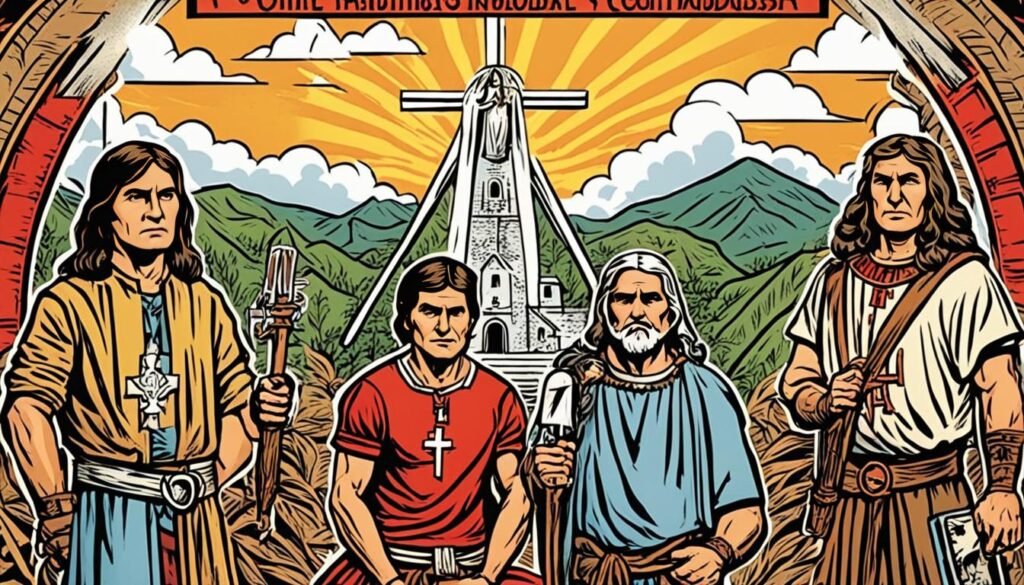
Roman Catholicism’s Influence
Roman Catholicism is the main religion in the Philippines. About 80% of Filipinos follow this faith. They have a strong bond with Spanish Catholic traditions. This is seen in customs like the Misa de Gallo and the Black Nazarene procession. These events draw big crowds to honor their saints. Processions and fiestas happen in different areas to celebrate saint’s feast days.
Catholic Traditions and Festivities
The country’s Catholic roots are alive in its customs and events. Before Christmas, Filipinos join in the Misa de Gallo, a series of dawn masses. The Black Nazarene procession is a highlight, attracting millions. It features a dark-skinned Jesus statue moving through the streets. Santo Niño Festivals are colorful events celebrating the Holy Child Jesus. And the Aguinaldo procession symbolizes honoring patron saints with lanterns.
Role of Religious Orders and Publications
Religious groups and their books in native languages spread Catholicism fast. The church’s well-organized groups, like dicasteries, helped in guiding the followers. The Church has a system like a government, with the pope as the leader. This structure, along with the teaching materials, helped Catholicism grow in the Philippines.
Rise of Filipino Intellectuals and Clergy
Historians believe the Spanish colonial authorities and the Church caused problems in the Philippines from 1521-1898. Filipino clergy and Catholics were upset. They didn’t have enough training to get important roles in the Church or make changes in their country.
Spanish officials and Church leaders were afraid. They worried that giving more education to Filipinos would weaken their control. They thought it might lead to Filipino independence.
Discontent with Spanish Clergy
Filipino intellectual José Rizal criticized the Spanish clergy and government. He wrote “Noli me tángere” and “El filibusterismo” to show their wrongdoings. His efforts against Spanish rule led to his execution in 1896. The Spanish made him a national hero after his death.
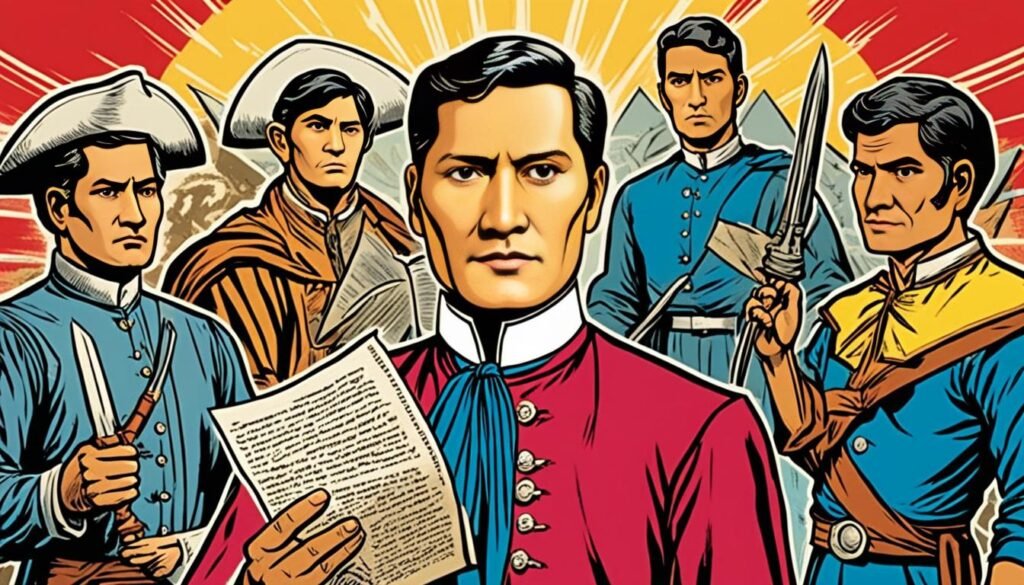
Protestantism’s Arrival
Protestantism started in the Philippines when the Americans arrived in the early 1900s. This was after the Spanish-American War ended in 1898, and the Philippines became a US territory. Protestant American missionaries came not long after. They established various Protestant churches throughout the 20th century in the Philippines.
American Missionaries and Denominations
Many organizations started, like the Association of Fundamental Baptist Churches in the Philippines and the Baptist Bible Fellowship. Others include the Church of God (Cleveland, Tennessee) and the Church of the Foursquare Gospel in the Philippines. Protestantism is now one of the biggest divisions of Christianity worldwide, with up to a billion followers. It covers about 37% of all Christians. By 2050, it is believed that most Christians will be Protestant.
Within Protestantism, there are many groups. Some of the biggest are Adventists, Anabaptists, Baptists, and Lutherans. There are also groups like Methodists and Presbyterians. Others, like nondenominational and independent churches, are gaining in numbers.
Protestantism aims to follow the ideas of the Protestant Reformation. These began in the 1500s to change the Catholic Church. Protestants wanted to fix what they saw as mistakes.
https://www.youtube.com/watch?v=b3ud6blplaQ
Indigenous Christian Movements
In the Philippines, Christianity, especially Catholicism, became the main religion. But, there are also several indigenous Christian movements. They are known as “Christian-related New Religions.” Japanese scholars gave them this name. These religions have been started by Filipino leaders. They don’t follow missionary work or traditional ways of Christian denominations.
Iglesia ni Cristo
Felix Y. Manalo founded the Iglesia ni Cristo (Church of Christ) in 1914. It stands as the biggest Christian group started by Filipinos. The group has grown up to include several hundred to more than twenty thousand members. It is a key player in the religious scene of the Philippines.
Jesus Miracle Crusade International Ministry
The Jesus Miracle Crusade International Ministry began in 1975. It’s a religious group from the Philippines. This group believes strongly in miracles and the power of faith for healing. Led by Evangelist Wilde E. Almeda, it has gained a strong following. Many people turn to this group for spiritual support and miracles.
Members Church of God International
The Members Church of God International is famous for its show “Ang Dating Daan.” It stands out because it doesn’t believe in some key Christian and Catholic doctrines. This group is growing in the Philippines. It’s attracting those who want a different kind of spiritual community.
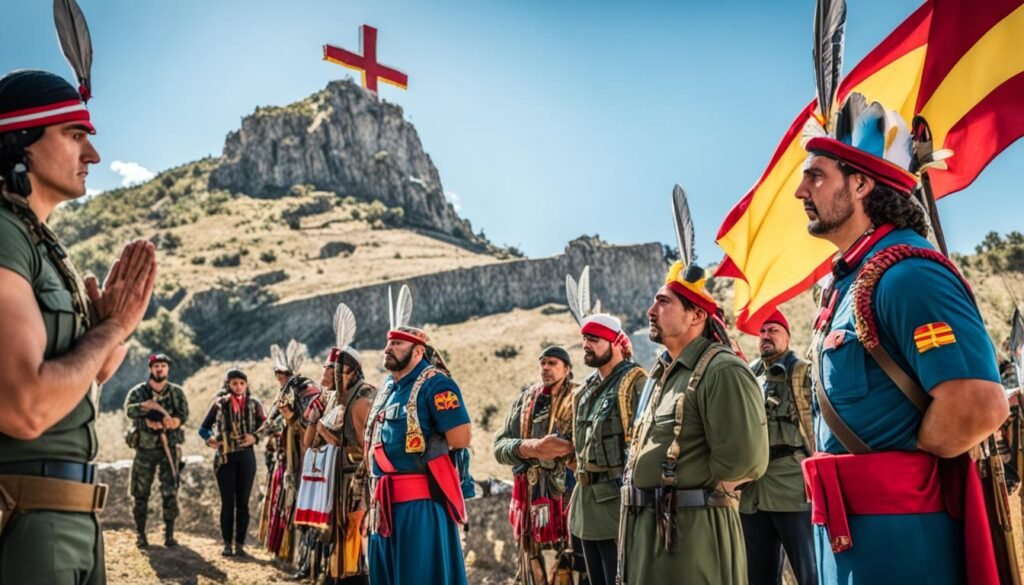
Coexistence of Beliefs
In the Philippines, Christianity, especially Catholicism, is the main religion. Despite this, various beliefs and practices coexist. In many areas, local traditions like belief in mythical creatures and worshiping nature still live on. These are alongside Christian and Islamic faith. This mix creates a unique blend, called syncretism, of different religious ideas.
Syncretism and Cultural Amalgamation
In the Philippines, many beliefs and traditions exist together. The local practices and main Christian beliefs mix in a harmonious way. As a result, a unique religious and cultural scenery has taken shape. This syncretism shows how Filipino people’s beliefs are adaptable and strong.
The country has managed a balance between old and new religious beliefs. This balance encourages open discussions and learning. People with different worldviews understand and respect each other.
| Belief System | Prevalence | Key Characteristics |
|---|---|---|
| Christianity (Catholicism) | Dominant | Introduced by Spanish colonizers, rapid conversion of population, prominent role of religious orders and publications |
| Indigenous Beliefs (Animism, Shamanism) | Persistent in some regions | Belief in spirits, nature worship, role of shamans and priestesses, coexistence with mainstream faiths |
| Syncretism | Widespread | Blending of elements from different religious traditions, creating a unique cultural and religious identity |
This mix in the Philippines shows how diverse religious ideas have shaped its people. It has led to a rich and vibrant religious tapestry. This tapestry reflects the unity in diversity among Filipinos.
Conclusion
The faith in the Philippines has been a rich journey. It mixes traditional beliefs with Christianity and Spanish history. This has led to a unique blend of religions in the country.
Despite faith in Christianity, the Philippines also holds other beliefs. The mix of different faiths has shaped a distinctive cultural identity. This shows how Filipinos embrace and blend various traditions.
Exploring the understanding of faith uncovers a tale of strength and diversity. It shows how the Filipino people unite beyond religion. This creates a deeper connection among all despite different beliefs.
FAQ
What were the dominant religious beliefs in pre-colonial Philippines?
In the Philippines, before Christianity, many practiced animism. They believed in deities like Bathala and honored their ancestors (anitos). People skilled in magic, chants, and prayers were key figures, playing roles as healers and spiritual leaders.
How did Christianity arrive in the Philippines?
Christianity, mainly Catholicism, came to the Philippines in 1521. This was when Ferdinand Magellan landed. He and his crew celebrated the first mass in the Philippines on Limasawa Island.
The first conversion to Catholicism was recorded in Cebu on April 14, 1521. The King and Queen of Cebu, along with their people, then embraced the faith.
What was the impact of the Spanish Inquisition on the Philippines?
The Spanish Inquisition had a branch in the Philippines. It was focused on matters of faith and morals. This included cases of sorcery, witchcraft, bigamy, and heresy.
It dealt with evidence-gathering and decision-making, often resulting in fines or penalties. Sometimes it led to death.
How did Catholicism become the dominant religion in the Philippines?
Within 25 years of the Spanish arrival, about half the Filipino population had become Christian. This fast adoption was supported by publishing religious education materials in native languages.
Efforts of Spanish colonial authorities and religious orders also played a big part. They helped spread Christianity across the islands.
What was the role of Filipino intellectuals and clergy in the religious landscape?
Filipino intellectuals and clergy were unhappy with their lack of religious education. Without proper training, they couldn’t hold high positions in the Church. They also couldn’t make a difference in their society.
José Rizal, a famous Filipino intellectual, criticized the corruption of the Spanish clergy. He did so through his novels. His work aimed to expose the hypocrisy within the Church.
What other religious movements emerged in the Philippines?
Besides Catholicism, a few indigenous Christian groups have risen in the Philippines. These include the Iglesia ni Cristo, the Jesus Miracle Crusade International Ministry, and the Members Church of God International. Their beliefs vary from traditional Christian views.
These movements have brought diversity to the religious scene in the country.
How has the religious landscape in the Philippines been shaped by the coexistence of beliefs?
The Philippines has a diverse religious culture due to coexisting beliefs. This is seen among both indigenous groups and followers of more well-known faiths.
Such coexistence has led to a mix of traditions. It’s a blend of different religious practices, creating a unique and varied spiritual environment in the country.
Source Links
- https://blogs.loc.gov/international-collections/2018/07/catholicism-in-the-philippines-during-the-spanish-colonial-period-1521-1898/
- https://en.wikipedia.org/wiki/Religion_in_pre-colonial_Philippines
- https://www.slideshare.net/trosquillo/religious-experiences-and-spirituality-indigenous-religions-in-precolonial-philippines
- https://www.britannica.com/topic/Christianity
- https://www.history.com/topics/religion/history-of-christianity
- https://en.wikipedia.org/wiki/History_of_Christianity
- http://www.philippinestudies.net/files/journals/1/articles/3181/submission/copyedit/3181-9643-1-CE.pdf
- https://www.newadvent.org/cathen/08026a.htm
- https://mb.com.ph/2024/3/20/quiboloy-s-case-the-dark-side-of-faith
- https://www.britannica.com/topic/Roman-Catholicism
- https://en.wikipedia.org/wiki/Catholic_Church
- https://en.wikipedia.org/wiki/Protestantism
- https://brill.com/previewpdf/book/edcoll/9789047402374/BP000008.xml
- https://mfnn.org/resource/can-we-should-we-really-coexist/
- https://timewarpwife.com/faith-provision-bible-study-conclusion/

